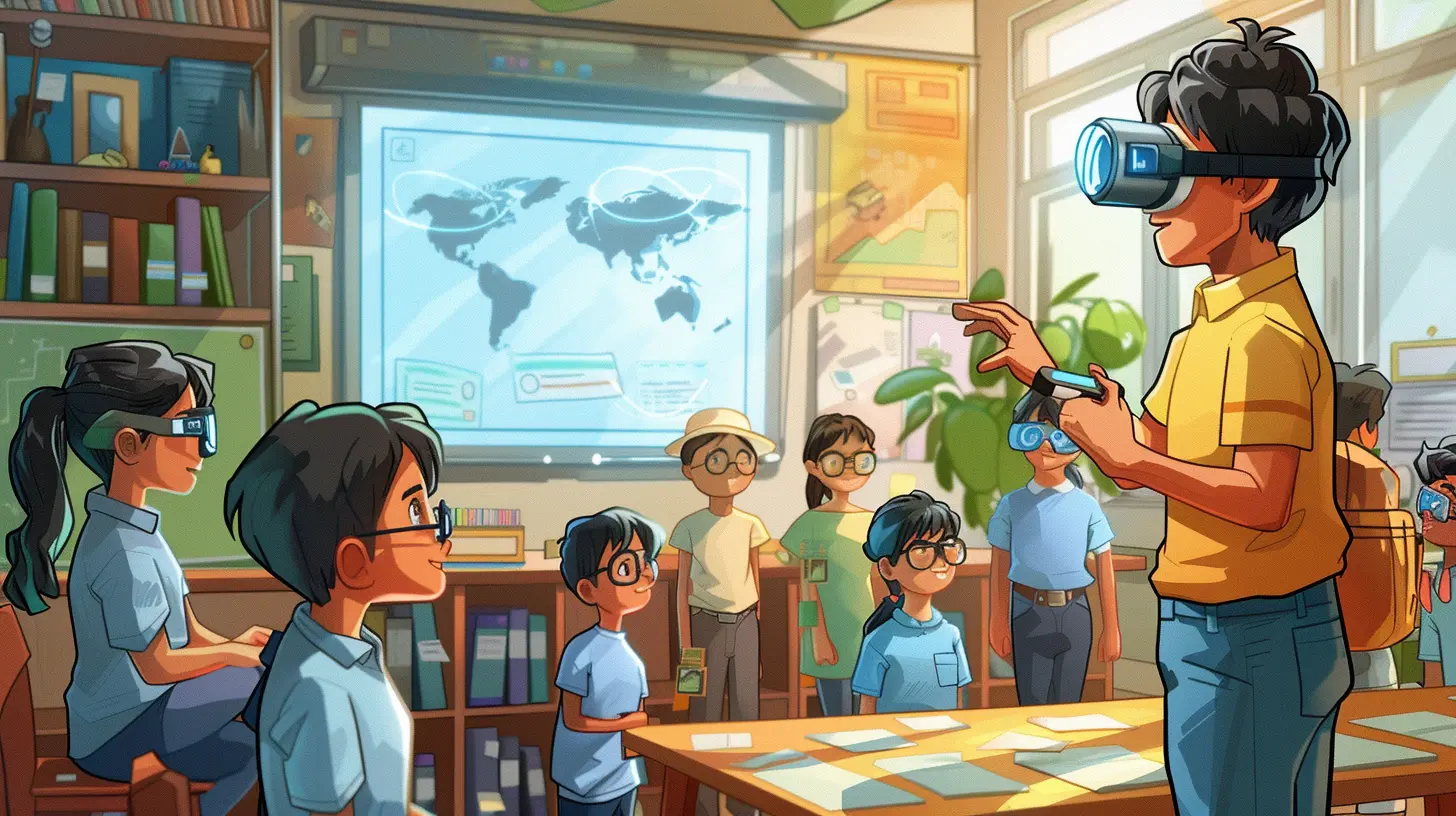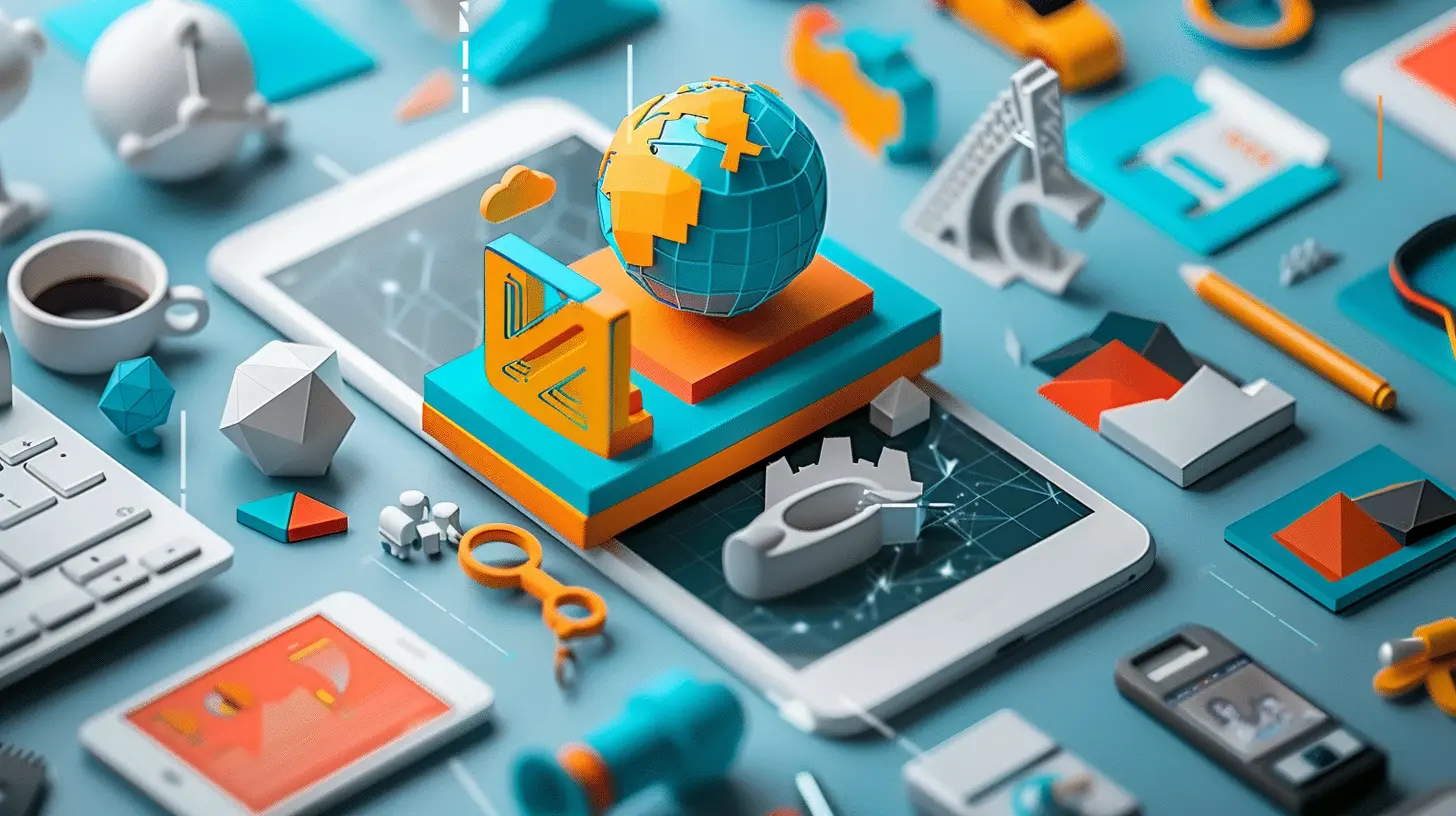26 April 2025
Introduction
Imagine sitting in a history class and instead of reading about ancient Rome, you could walk through its streets, see the grand Colosseum, and witness historical events unfold right before your eyes. Sounds like science fiction, right? Well, this is exactly what Augmented Reality (AR) is making possible in education.
Technology is transforming the way students absorb information, and AR is leading the charge by creating immersive, engaging, and interactive learning environments. But how exactly does AR enhance learning experiences? Let's dive in.

What is Augmented Reality?
Before we explore its impact on education, let's get a quick understanding of AR. Augmented Reality is a technology that overlays digital content—like images, sounds, or animations—onto the real world. Unlike Virtual Reality (VR), which completely immerses users in a digital environment, AR enhances the real world by adding virtual elements to it.A simple example? Think of Pokémon GO, where virtual creatures appear in your surroundings through your smartphone screen. Now, imagine that same concept applied to the classroom!

The Role of Augmented Reality in Education
AR isn't just some fancy technology gimmick; it has real educational value. Here are some key ways AR is transforming learning:1. Making Learning More Engaging
Let's be honest—traditional learning methods can sometimes feel dull. Long lectures, heavy textbooks, and monotonous studying can quickly lead to disinterest. AR changes this by making learning interactive and engaging.For example, instead of just reading about the solar system, AR apps allow students to explore planets in 3D, rotate them, and even zoom in to see their surface details. This hands-on experience makes lessons much more exciting.
2. Enhancing Retention and Understanding
Studies have shown that people tend to remember things better when they experience them visually and interactively. Since AR provides immersive learning experiences, it significantly enhances knowledge retention.Think about it—would you remember a diagram of a human heart in a textbook, or a 3D AR model that allows you to explore each chamber, see how blood flows, and even hear the heartbeat? The latter clearly leaves a lasting impression.
3. Bridging the Learning Gap
Every student learns at their own pace. Some grasp concepts quickly, while others need more time. AR helps bridge this gap by providing personalized learning experiences.For instance, AR apps can break down complex mathematical problems into interactive steps, allowing students to understand difficult concepts with ease. This makes learning more accessible, especially for those who struggle with traditional methods.
4. Encouraging Active Participation
Keeping students engaged in a classroom can be challenging. AR naturally encourages participation by turning lessons into a game-like experience.For example, AR-powered quizzes and puzzles can make learning feel more like playing a game rather than a chore. This motivates students to participate more actively, leading to better learning outcomes.
5. Providing Real-World Applications
One of the biggest complaints students have is, “When will I ever use this in real life?” AR provides clear, real-world applications of theoretical knowledge.Medical students, for instance, can use AR to practice surgeries in a risk-free environment before operating on real patients. Similarly, engineering students can see how machines function in real time—without dismantling actual equipment.
6. Breaking Language Barriers
Learning a new language can be tough, especially if you're struggling with vocabulary and pronunciation. AR language learning apps provide real-time translation and pronunciation guides, making it easier for students to grasp new languages.Imagine pointing your phone at an object and instantly seeing its name in another language. This makes language learning more interactive and effective.

How Schools and Universities Are Using AR
Many educational institutions worldwide are already integrating AR into their teaching methods. Here are some fascinating applications:- Interactive Textbooks: AR-enabled textbooks allow students to scan images with their phones to access 3D models, videos, and animations.
- Virtual Field Trips: Students can explore historical landmarks, museums, and even outer space without leaving the classroom.
- AR Labs: Science students can conduct virtual dissections, chemistry experiments, and physics simulations without the need for costly lab equipment.
- Special Needs Education: AR provides customized learning tools for students with disabilities, making education more inclusive.

Popular AR Tools for Education
Several tech companies have developed innovative AR tools for education. Some of the most popular ones include:✅ Google Expeditions AR – Offers immersive AR-based field trips.
✅ Merge Cube – A handheld cube that brings 3D objects to life.
✅ QuiverVision – Turns coloring pages into animated 3D models.
✅ Human Anatomy Atlas AR – A must-have for medical students.
✅ NASA's Spacecraft AR – Lets students explore space missions up close.
Challenges of Implementing Augmented Reality in Education
While AR has incredible potential, there are some challenges to consider:1. High Costs: Not all schools can afford AR-compatible devices and apps.
2. Technical Issues: AR requires a strong internet connection and up-to-date hardware.
3. Teacher Training: Educators must be trained on how to effectively use AR in classrooms.
4. Content Availability: Not all subjects have high-quality AR content available.
However, as technology advances and AR becomes more affordable, these challenges will diminish over time.
The Future of Augmented Reality in Education
The future of AR in education looks incredibly promising. With the continuous development of Artificial Intelligence (AI) and AR, we can expect even more personalized and adaptive learning experiences.Imagine AI-powered AR tutors that analyze a student’s weaknesses and tailor lessons accordingly. Or global AR classrooms where students from different parts of the world can collaborate and learn together.
As technology evolves, AR will likely become a standard part of education, revolutionizing the way we teach and learn.
Conclusion
Augmented Reality is no longer just a futuristic concept—it’s already transforming classrooms around the world. By making learning more engaging, interactive, and immersive, AR is enhancing education like never before.Of course, there are challenges to overcome, but the benefits far outweigh the drawbacks. As AR becomes more accessible, it has the potential to revolutionize education and make learning a truly unforgettable experience.
So, whether you’re a student, teacher, or parent, be prepared—because the classroom of the future is already here!


